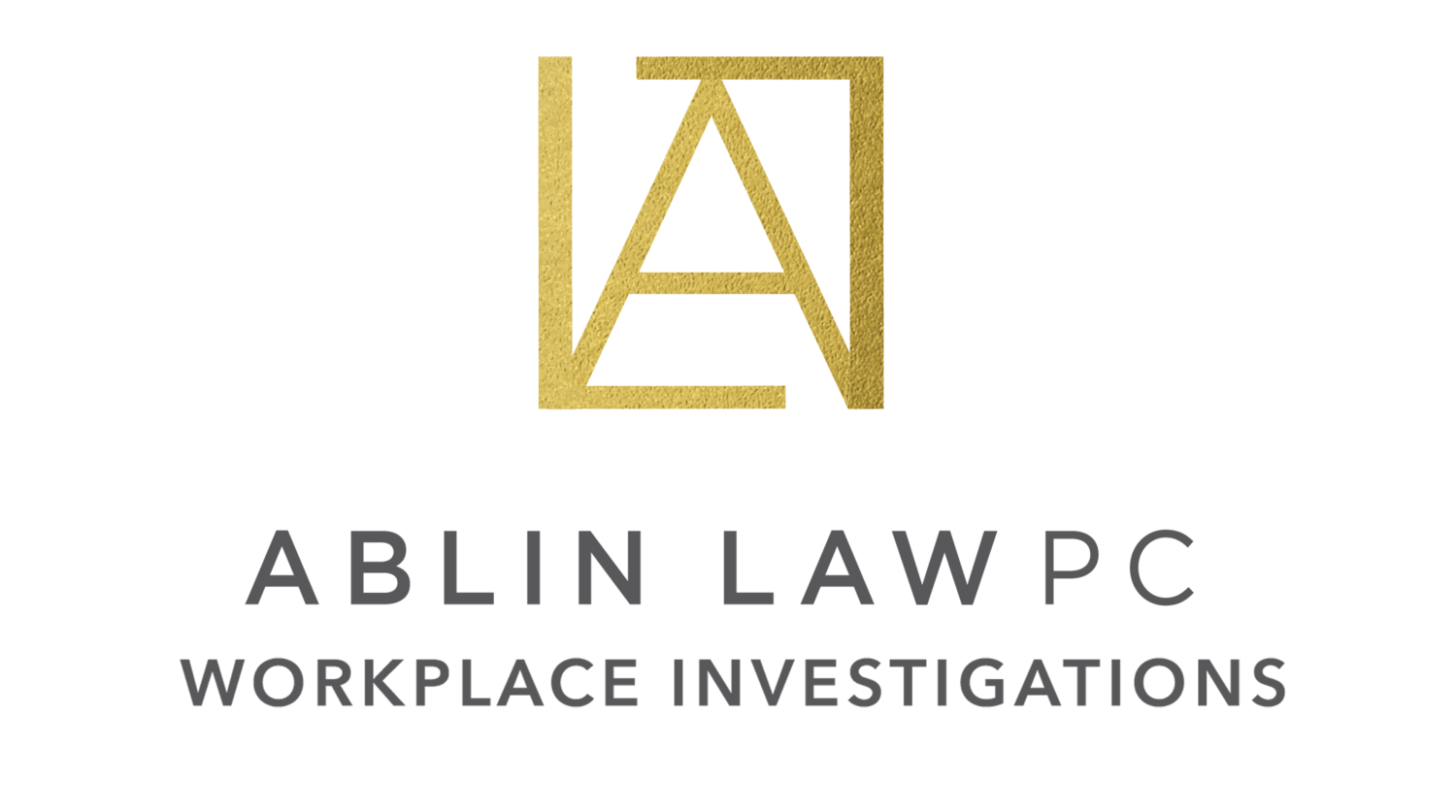As an expert resource in workplace investigation, Ablin Law understands the complexities and challenges that companies and their HR professionals face when dealing with workplace retaliation complaints.
With the inherent complexity of such investigations in mind, we have put together some helpful guidance that business leaders can leverage when retaliation complaints arise.
Workplace Retaliation Investigation Checklist: Protect your organization and employees by following this essential checklist designed to guide fair, thorough, and compliant retaliation investigations.
What is a Retaliation Complaint?
First, let’s define retaliation complaints.
Retaliation complaints arise when an employer takes negative employment action against an employee in retaliation for reporting illegal conduct such as discrimination (“protected complaint”). Unfortunately, retaliation complaints occur far more often than you might think. In 2020, 60% of all EEOC charges alleged retaliation.
Examples of Retaliation Complaints
Before delving into the investigation process, let’s explore some real-world scenarios that highlight the nature of retaliation complaints:
- Case 1: Whistleblower Retaliation: An employee reports a safety violation to the relevant authorities. In response, the employer demotes the employee and assigns them undesirable tasks.
- Case 2: Reporting Discrimination: An employee files a complaint about racial discrimination. Shortly after, they’re passed over for a promotion, even though they were highly qualified.
Retaliatory actions by employers can also include being passed over for a promotion or raise, being denied advancement opportunities, being terminated, suspended, or reassigned, receiving a cut in pay or hours, being asked to do more than your colleagues, and receiving verbal or physical abuse or harassment.
An 8-Step Checklist for Investigating Retaliation Complaints at Work
If you receive a complaint from an employee alleging retaliation, it is imperative the issue is addressed promptly.
Whether you decide to handle the investigation in-house or outsource it to legal professionals, here are the general steps for conducting a workplace investigation:
1. Receive the Complaint
- Promptly and officially document the retaliation complaint.
- Maintain confidentiality to protect both the complainant and the accused party.
- Assess your neutrality and decision-making authority, considering external assistance if needed.
2. Conduct an Initial Assessment
- Clarify the specific allegations and gather initial information, ideally within 2-3 business days of receiving a complaint.
- Review any communications from the complainant regarding the matter.
- Consider whether there is evidence of a protected complaint as well as the proximity in time between the protected complaint and alleged retaliation.
- Inform the complainant about the investigation process.
- If possible, separate the complainant and the respondent to prevent further potential harm.
- Secure any physical evidence if applicable.
3. Interview Witnesses
- Prepare a list of open-ended questions to gather detailed information.
- Interview the complainant and any witnesses separately. Interviewing in a private space or off-site (if appropriate) may help put parties at ease and reduce office gossip.
- Document interviews accurately and impartially. Remember, any complaint has the potential to result in litigation, so document the process in as much detail as possible.
- Determine through interviews or documentation whether the subject of the investigation was aware of the complaint.
- Confirm whether the complainant made a protected complaint and whether that complaint can be verified.
4. Review Documentation
- Examine relevant company policies, procedures, and records.
- Assess the timeline of events leading up to the retaliation complaint.
- Determine if any claims of performance problems are a pretext for retaliation.
- Determine whether the alleged retaliation constitutes a legal violation or a violation of company policies. Consult an attorney if necessary.
- Understand the relevant laws and regulations in your jurisdiction.
5. Make Credibility Determinations
- Weigh the credibility of all parties and witnesses. Determining credibility can be challenging, but it’s essential for a fair investigation.
- Keep in mind that the longer the time period between the protected complaint and the alleged retaliation, the less of a causal connection there is between the two events.
6. Reach a Decision and Provide Recommendations
- Based on the evidence and findings, reach a conclusion regarding the validity of the retaliation complaint. Remember that you don’t have to be 100% certain; a preponderance of evidence (51%) is sufficient.
- Recommend appropriate actions, such as disciplinary measures, policy changes, or training.
- Ensure that any necessary corrective actions are taken promptly.
7. Communicate Findings to Involved Parties
- Follow up with the complainant and respondent to close out the investigation.
8. Adopt Preventive Measures and File Necessary Reports
- Work with management to implement preventive measures that reduce the risk of future retaliation complaints.
- Consider training on communication or management best practices if applicable.
- Report the investigation’s outcome to relevant stakeholders and, if necessary, regulatory authorities.
Helping Employers Create Fair Workplaces for All
By following these steps, HR professionals will be better equipped to handle workplace retaliation complaints, ensuring a fair work environment for all employees.
Still, in many cases, an outside investigator is necessary, as this third-party expert has more agency, no perceived or real biases or workplace history, and an expert understanding of workplace investigations and legal nuances.
With that said, do not hesitate to reach out if Ablin Law can be of assistance. Helping employers navigate and resolve common and serious problems in the workplace is what we do.
You can contact Ablin Law today by telephone at 312.288.2012, text at 773.230.4386, or email at rachel@ablinlaw.com.
_______________
Sources:


Recent Comments